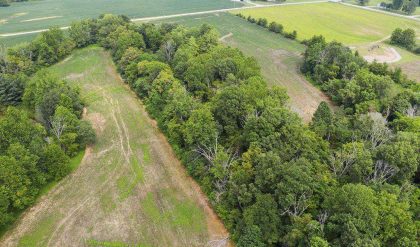The term ‘land’ generally refers to the surface of the earth. But in economics, it includes all that, which is available free of cost from ‘nature’ as a gift to human beings. Land stands for all nature, living and non-living which are used by man in production.
Even though land is passive factor and it does not possess any ability to produce on its own, it is an important agent of production. Modern economists consider land as a specific factor of production, which can be put, not only to a specific purpose but to several other uses.
Land has been defined by various scholars, as:
“By land is meant not merely land in the strict sense of the word, but whole of the materials and forces which nature gives freely for man’s aid in land, water, in air and light and heat.”
“Land is a specific factor or that it is the specific element in a factor or again that it is the specific aspect of a thing.” —PROF. f. K. MEHTA
Thus, we can say, land includes:
i. Surface of the earth like plains, plateaus, mountains, etc.
ii. Sea, rivers, ponds, etc.
iii. Air, light, etc.
iv. Oil, coal, natural gas, etc.
v. Silver, gold and other metals and minerals.
Characteristics of Land:
‘Land’ has specific characteristics, which distinguish it from other factors of production.
The main characteristics of land are:
1. Free Gift of Nature:
Basically, land is available free of cost from the nature. In the initial stages, man paid no price for the land acquired by him. However, to improve the usefulness or fertility of land or to make some improvements over land, some expenditure is to be incurred, but as such, it is available at no cost from nature. Man has to make efforts in order to acquire other factors of production.
But to acquire land no human efforts are needed. Land is not the outcome of human labor. Rather, it existed even long before the evolution of man.
2. Supply of Land is Fixed:
Supply of land is fixed in quantity. It means supply of land cannot be increased or decreased like other factors of production. Although for an individual, supply of land may be flexible, but at macro level, the overall supply of land is fixed. However, only effective supply of land can be increased by making an intensive use of land.
3. Difference in Fertility:
All lands are not equally fertile. Different patches of land have different degrees of fertility. Some locations are very fertile and have very good agricultural productivity, whereas some patches are totally barren and nothing can be grown there. Similarly, the degree of richness of mineral wealth varies from place to place, making the land more useful or less useful from economic point of view.
4. Indestructibility of Land:
Land is an indestructible factor of production. Man can change only the shape of a particular location and composition of its elements, but as such land cannot be destroyed. It can either be converted into a garden or to a forest or to an artificial lake. However, some parts of land get eroded due to natural factors, but that is immaterial because overall availability of land does not change.
5. Immobility:
Unlike other factors, land is not physically mobile. It is an immobile factor of production, as it cannot be shifted from one place to another. It lacks geographical mobility. Some economists, however, describe land as a mobile factor on the argument that it can be put to several uses.
6. Land is a Primary Factor of Production:
In any kind of production process, we have to start with land. For example, in industries it helps to provide raw materials, and in agriculture, crops are produced on land.
7. Passive Factor of Production:
Land is a passive factor of production, because it cannot produce anything on its own. Human element and capital inputs are required to be combined in an appropriate manner with land in order to obtain yields from it.
8. Effect of Laws of Returns:
Since land is a fixed factor of production, the laws of returns are more effectively applicable on it. Increased use of capital and labor on a particular plot of land leads to an increase in crop production at a diminishing rate.
9. Alternative Uses of Land:
Land is used for alternative purposes like cultivation, dairy or poultry farms, sheep rearing, building, etc. The use of land for any particular purpose depends not only on the return from that particular use, but also the returns from alternative uses.
10. Land is Heterogeneous:
Land like other factors of production differs from another in respect of location, fertility, nature and productivity. Two pieces of land are not exactly the same.





